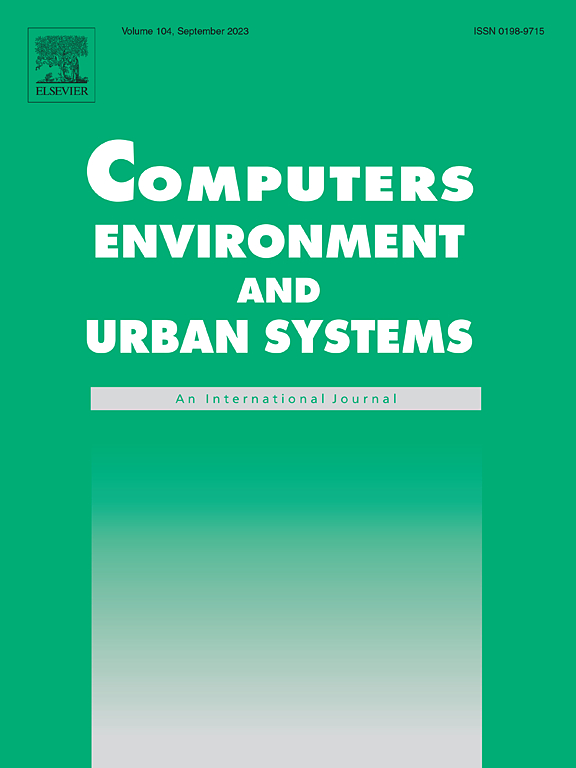从加拿大不列颠哥伦比亚省麦克杜格尔河野火期间的移动数据测量疏散率
IF 7.1
1区 地球科学
Q1 ENVIRONMENTAL STUDIES
Computers Environment and Urban Systems
Pub Date : 2025-04-03
DOI:10.1016/j.compenvurbsys.2025.102286
引用次数: 0
摘要
近年来,在气候变化引发极端干燥天气条件的推动下,全球野火的强度和发生率都有所上升。这项研究的重点是2023年不列颠哥伦比亚省的麦克杜格尔河野火,突出了城市社区对严重野火的脆弱性。使用来自加拿大电信提供商的聚合和去识别网络移动数据,我们量化了社区一级的疏散率,并检查了野火事件期间的区域间旅行模式。我们应用空间差分模型来了解社区特征如何影响疏散率。我们的研究结果表明,正式的疏散命令与疏散率呈正相关。我们还发现,到野火周边的距离是疏散率的一个强大而重要的预测因子,而以前被确定为疏散率的强预测因子的社会人口变量在这种特殊情况下并不显著。对森林火灾发生前和发生期间的旅行模式进行分析,揭示了区域间旅行在空间尺度上的明显方向性模式和变化。本研究有助于了解野火疏散动态,并将人员流动数据应用于灾害管理,提高我们对人类应对自然灾害的认识。本文章由计算机程序翻译,如有差异,请以英文原文为准。
Measuring evacuation rates from mobility data during the McDougall Creek wildfire in British Columbia, Canada
In recent years, the intensity and occurrence of wildfires have risen globally, driven by climate change triggering extreme dry weather conditions. This study focuses on the 2023 McDougall Creek wildfire in British Columbia, highlighting the vulnerability of urban communities to severe wildfires. Using aggregated and de-identified network mobility data from a Canadian telecommunications provider, we quantified neighborhood-level evacuation rates and examined inter-regional travel patterns during the wildfire event. We applied a spatial difference-in-difference (DID) model to understand how neighborhood characteristics influenced evacuation rates. Our findings suggest that formal evacuation orders were positively associated with evacuation rates. We also found that the distance to the wildfire perimeter was a strong and significant predictor of evacuation rates, while socio-demographic variables previously identified as strong predictors of evacuation rates were not significant in this particular context. The analysis of travel patterns before and during the wildfire event reveals distinct directional patterns and variations in inter-regional travel across spatial scales. This research contributes to the understanding of wildfire evacuation dynamics and the application of human mobility data into disaster management, enhancing our knowledge of the human response to natural disasters.
求助全文
通过发布文献求助,成功后即可免费获取论文全文。
去求助
来源期刊

Computers Environment and Urban Systems
Multiple-
CiteScore
13.30
自引率
7.40%
发文量
111
审稿时长
32 days
期刊介绍:
Computers, Environment and Urban Systemsis an interdisciplinary journal publishing cutting-edge and innovative computer-based research on environmental and urban systems, that privileges the geospatial perspective. The journal welcomes original high quality scholarship of a theoretical, applied or technological nature, and provides a stimulating presentation of perspectives, research developments, overviews of important new technologies and uses of major computational, information-based, and visualization innovations. Applied and theoretical contributions demonstrate the scope of computer-based analysis fostering a better understanding of environmental and urban systems, their spatial scope and their dynamics.
 求助内容:
求助内容: 应助结果提醒方式:
应助结果提醒方式:


